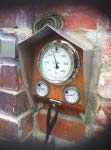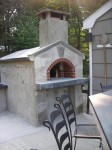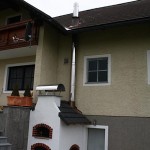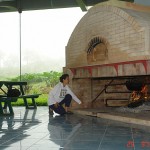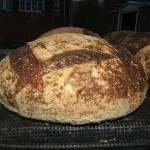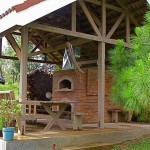back to board Main Page
Re: insulation limitations
From the WFO board
Posted by Rado
In Reply to: Re: insulation limitations posted by Bob K
Bob,
Top of a wood oven made of stones can look nice. It will also cut down on cost/work time. Apply the vermiculite insulation in 3 thinner layers, when the oven should be fired for cooking before every subsequent layer is added on. Mixed insulation applied in layers gets better used to movement and will push less on the final stone. The insulation mix with lime mentioned in the CD is very good for this kind of work as it's soft when set. Add very little water when mixing because vermiculite does not absorb water, mix semi dry. Better if the mixed stuff is not tapped on and also without smoothing that way it stays softer when dry.
For insulation in the front. Because there is only 1" or 25mm space, and if loose vermiculite can not be poured into a closed space, use ceramic blanket. I think I would choose cement board or metal to finish the front. Looks like the area is too thin for mortar and with an insulation under. You can try but if not bound to a firm surface on a larger area the mortar could start to peal off. It could still be fixed later if needed. Rado
Oven building details pages for Insulation Matters, cladding layer, oven thermal mass explained or even the different oven shapes and their functions explained.
- Re: insulation limitations - Rado
- Re: insulation limitations - Bob K
- Re: insulation limitations - Rado
- Re: insulation limitations - Rado
- Re: insulation limitations - Bob K

Jamie and Katrina's brick oven with temperature gauge, in Victoria.
Concrete blocks used for the oven’s outer walls. By Joe in Connecticut USA
Wood fired family oven and chimney project by Robert in Austria
My oven with fireplace, cook food and heat water, by Joel in Philippines
Baking sourdough breads in quantity in Canada
Pizza oven and hut built by Tony in Philippines
